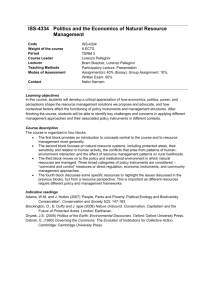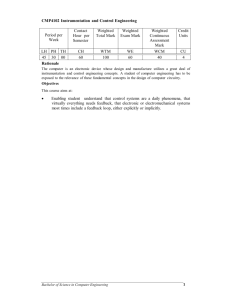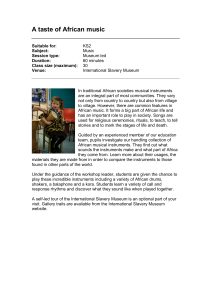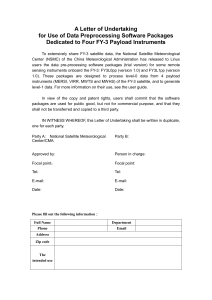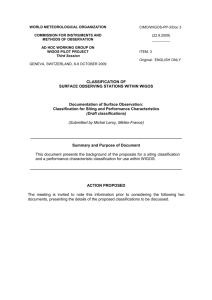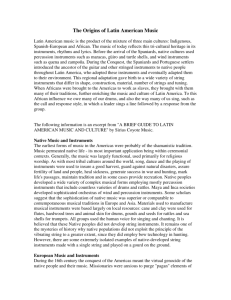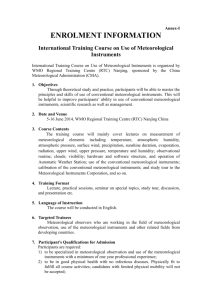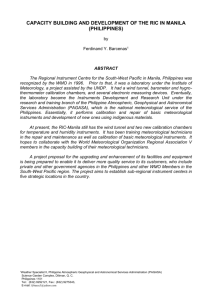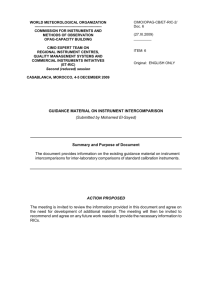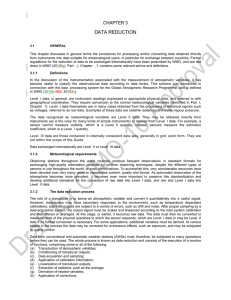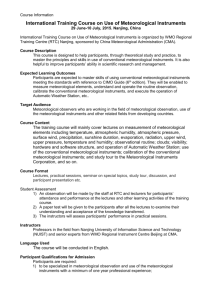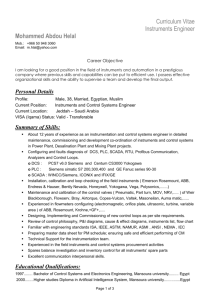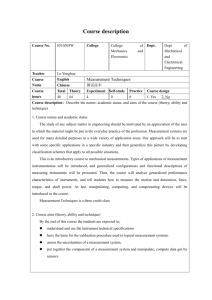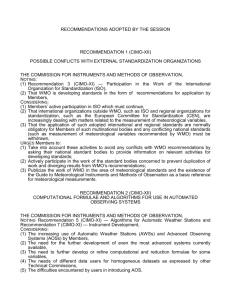MET 1102 Meteorological Instruments and Observation Methods
advertisement
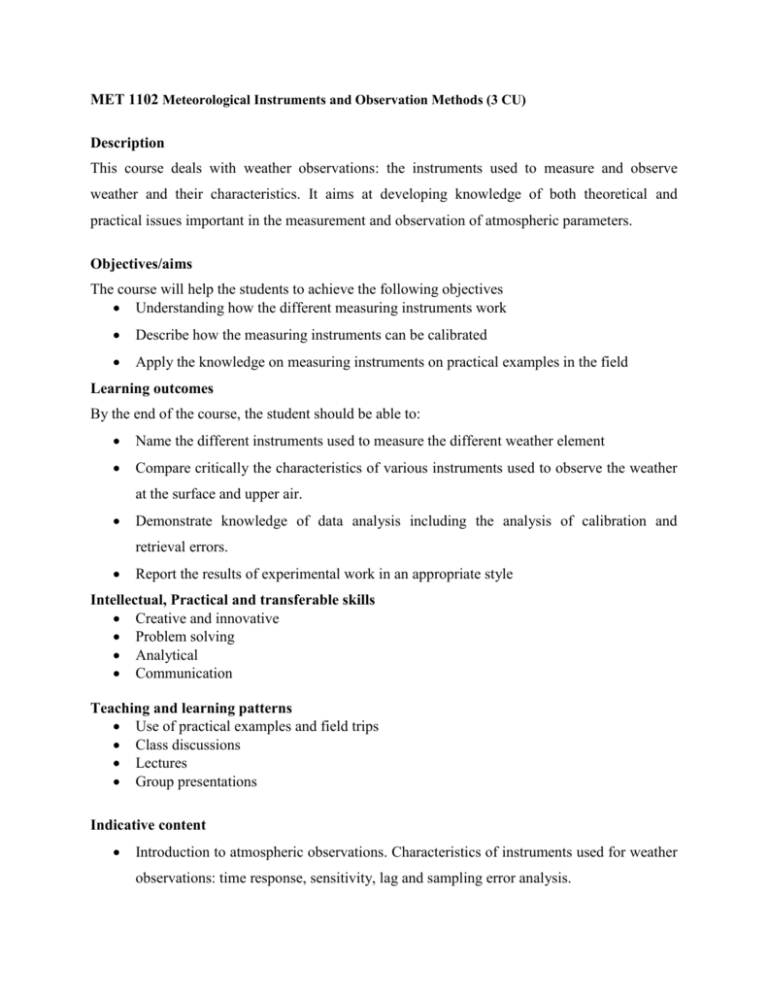
MET 1102 Meteorological Instruments and Observation Methods (3 CU) Description This course deals with weather observations: the instruments used to measure and observe weather and their characteristics. It aims at developing knowledge of both theoretical and practical issues important in the measurement and observation of atmospheric parameters. Objectives/aims The course will help the students to achieve the following objectives Understanding how the different measuring instruments work Describe how the measuring instruments can be calibrated Apply the knowledge on measuring instruments on practical examples in the field Learning outcomes By the end of the course, the student should be able to: Name the different instruments used to measure the different weather element Compare critically the characteristics of various instruments used to observe the weather at the surface and upper air. Demonstrate knowledge of data analysis including the analysis of calibration and retrieval errors. Report the results of experimental work in an appropriate style Intellectual, Practical and transferable skills Creative and innovative Problem solving Analytical Communication Teaching and learning patterns Use of practical examples and field trips Class discussions Lectures Group presentations Indicative content Introduction to atmospheric observations. Characteristics of instruments used for weather observations: time response, sensitivity, lag and sampling error analysis. The design, operation and calibration of standard meteorological instruments Measurement techniques for temperature, humidity, wind, air pressure, atmospheric radiation and precipitation. Characteristics and use of special observational platforms, satellites, radars, balloons, automatic buoys and aircrafts. Theory and practice of experimental data analysis Synoptic weather observations, International exchange of meteorological observation and meteorological codes. Assessment Method The assessment method is structured to include course work, and final examination. Course work consists of assignments, reports, practicals and tests and accounts for 40% of the final grade. The final examination will account for 60% of the final grading Core Reference materials Mike M.N. Mwebesa (1976): East African Observer's Handbook, (handbook of standard procedures for surface weather observing and recording of climatological data) Rev. ed. East African Community, East African Meteorological Dept. in Nairobi. Sverre Pettersen (1956): Weather Analysis and Forecasting, Volume 1, McGraw-Hill







